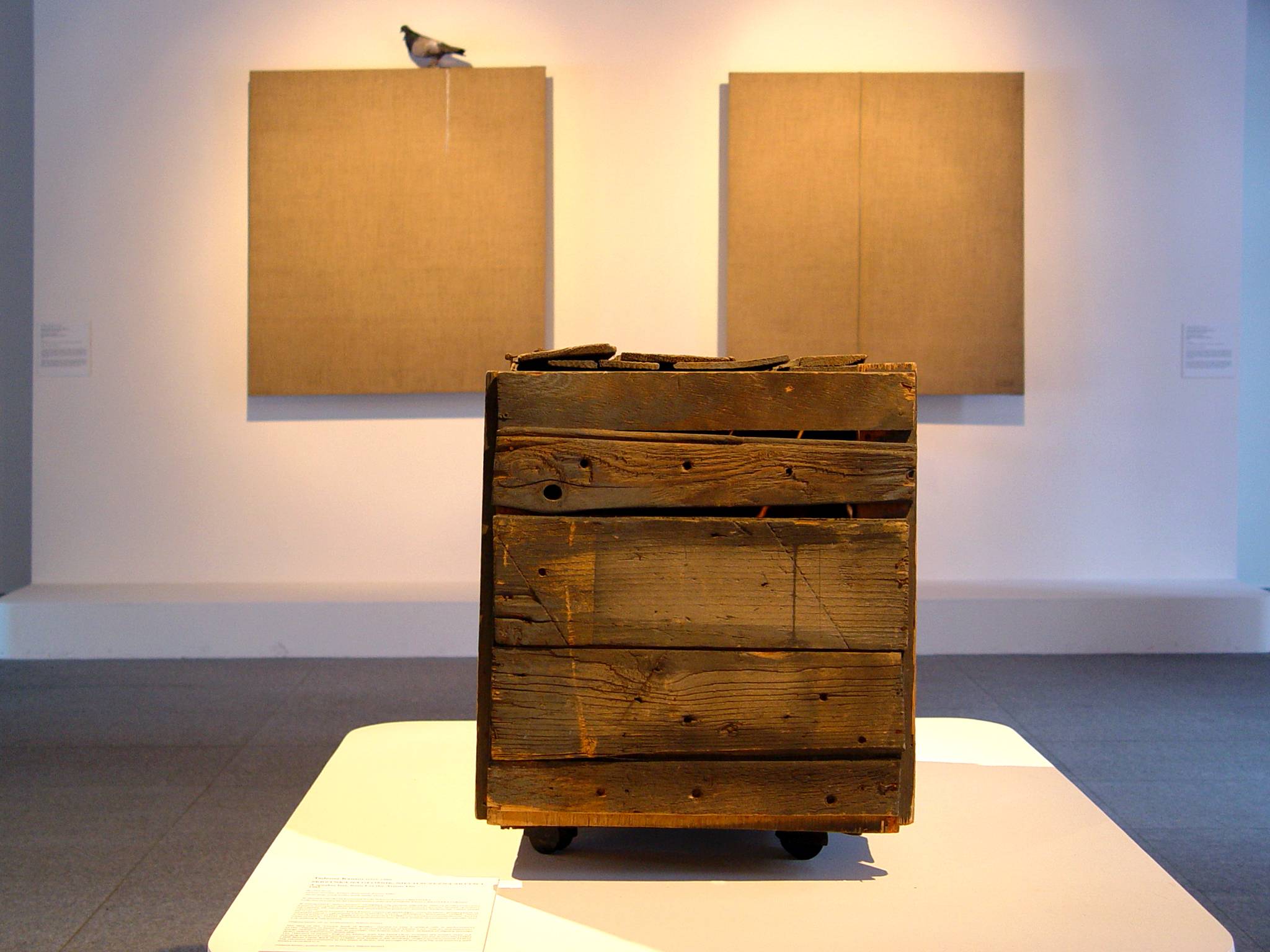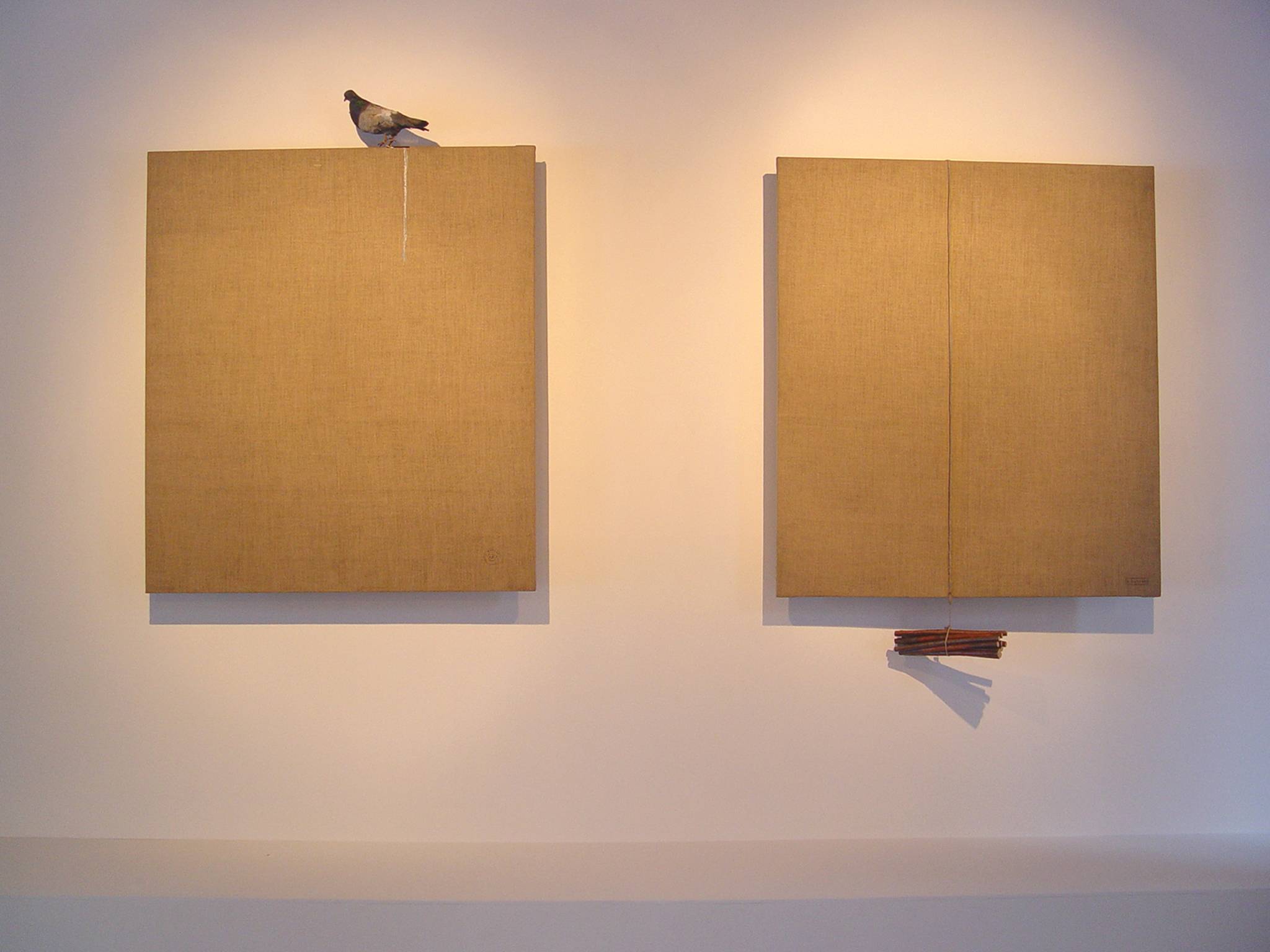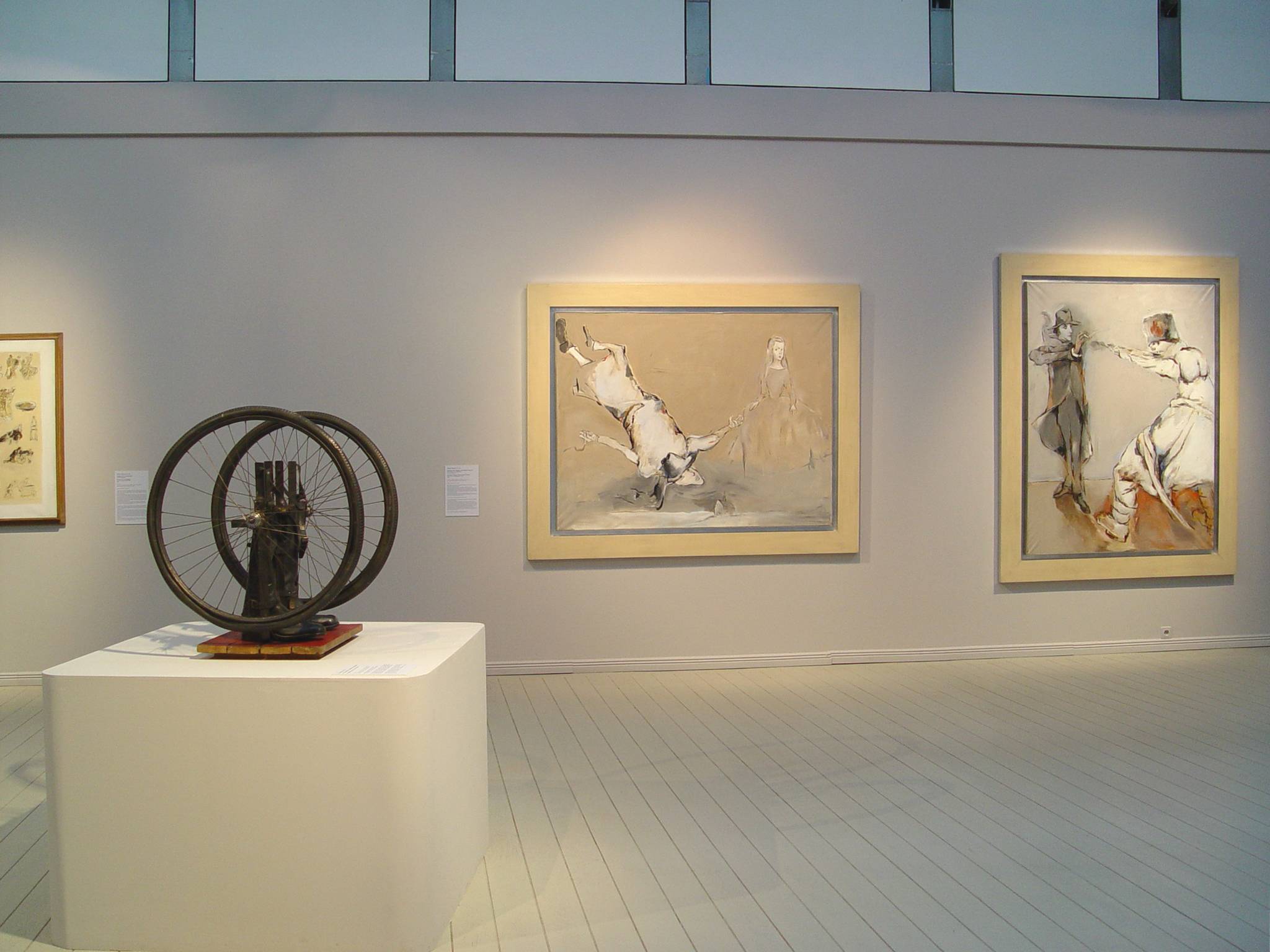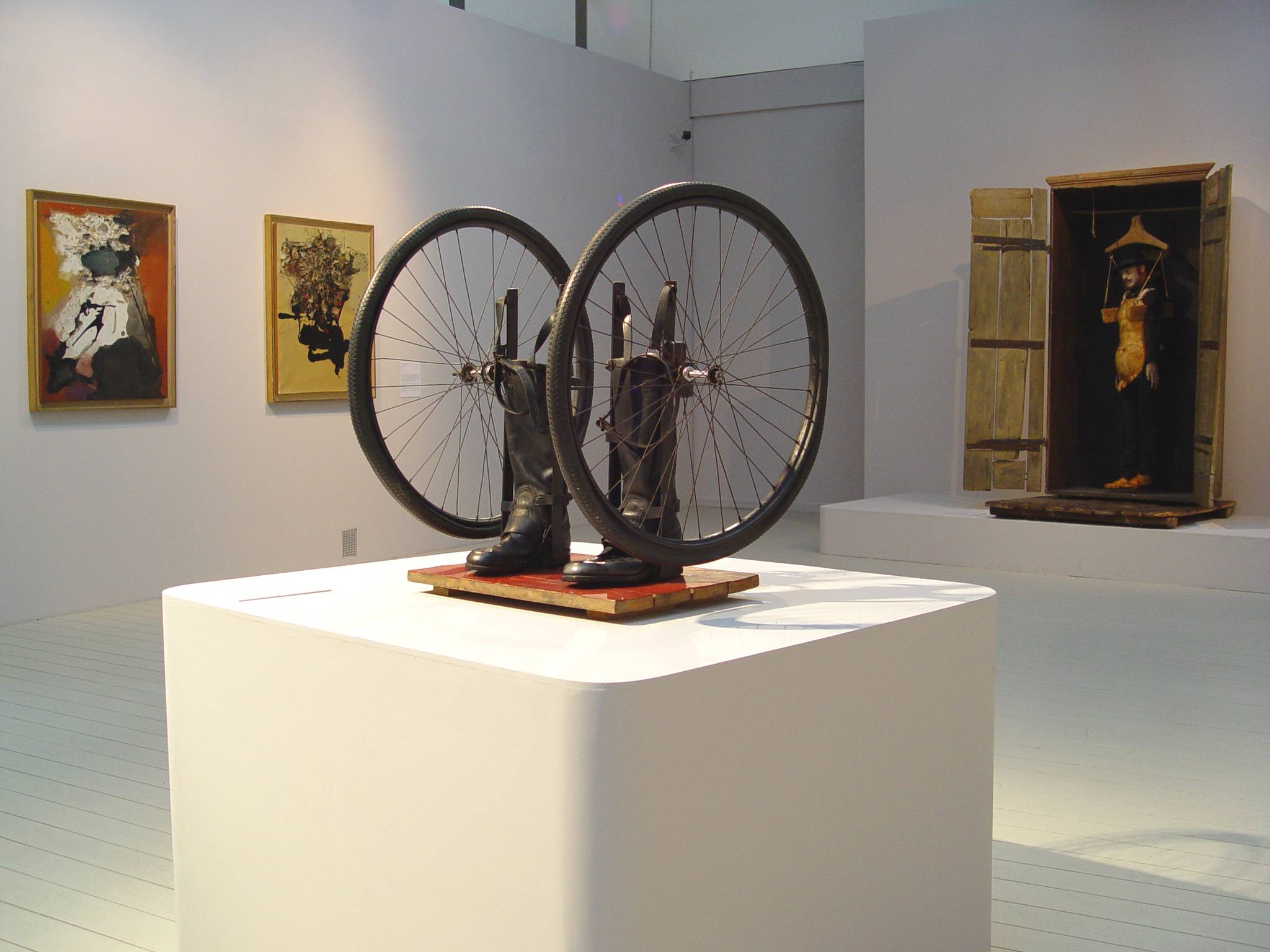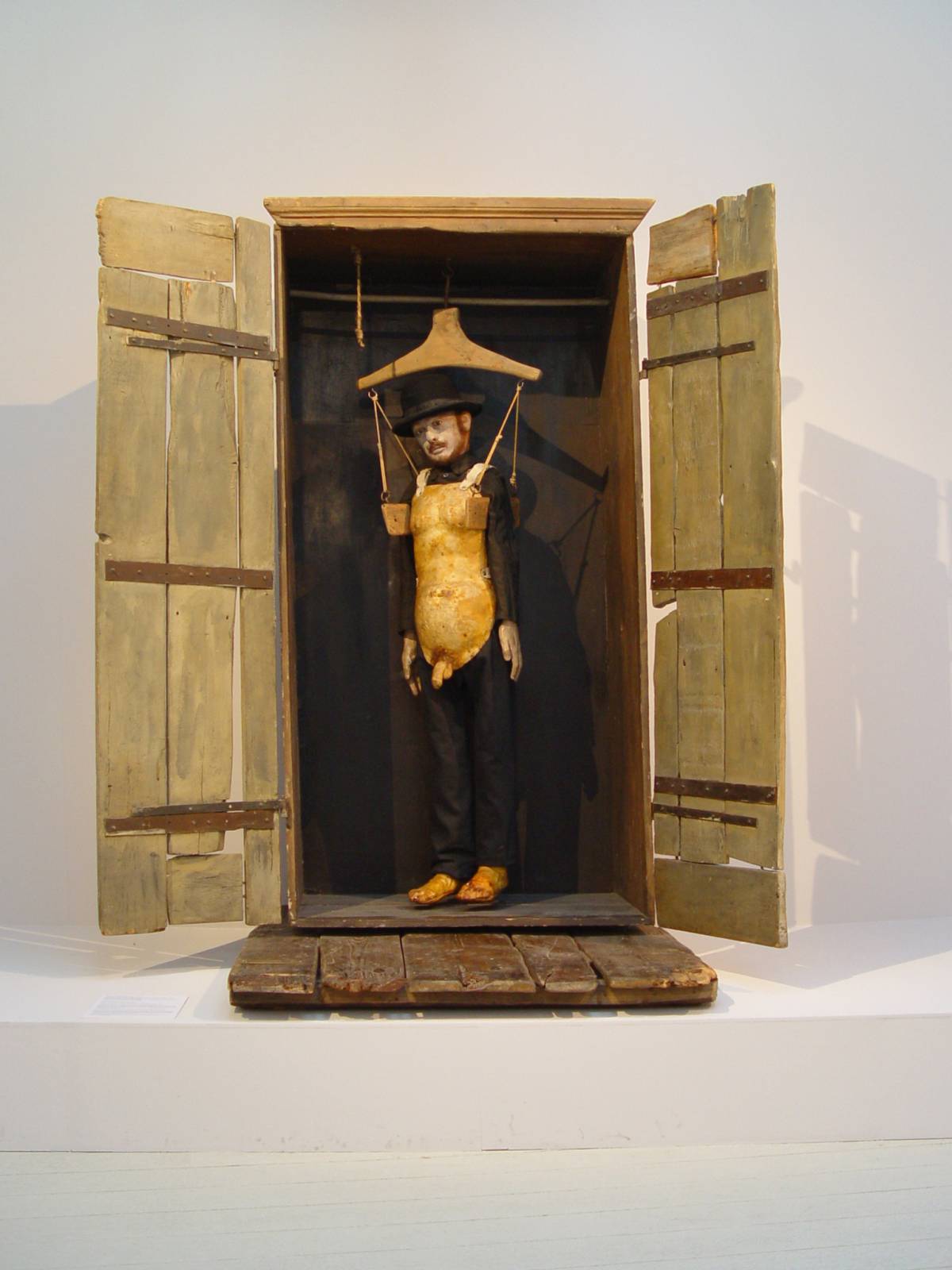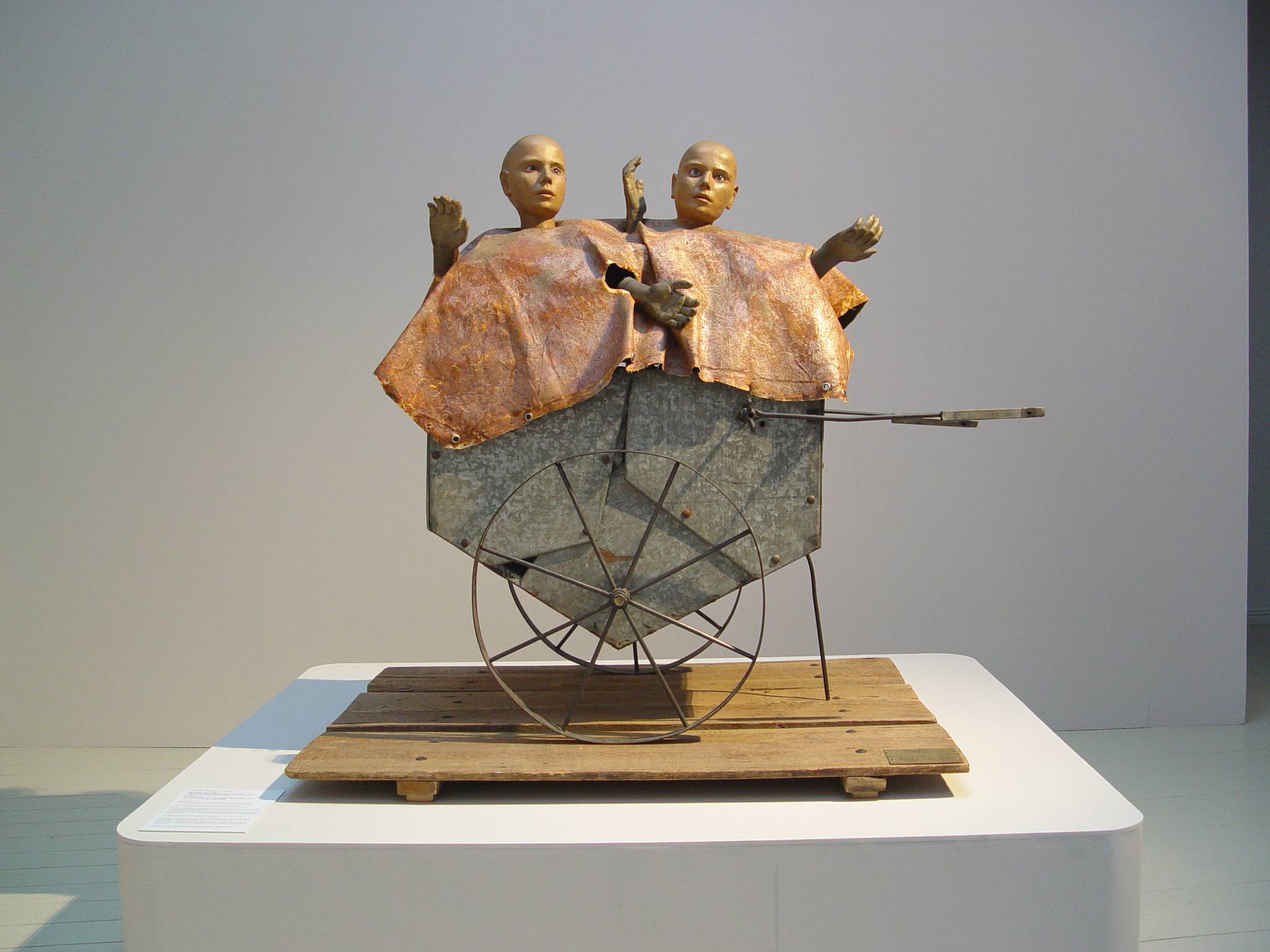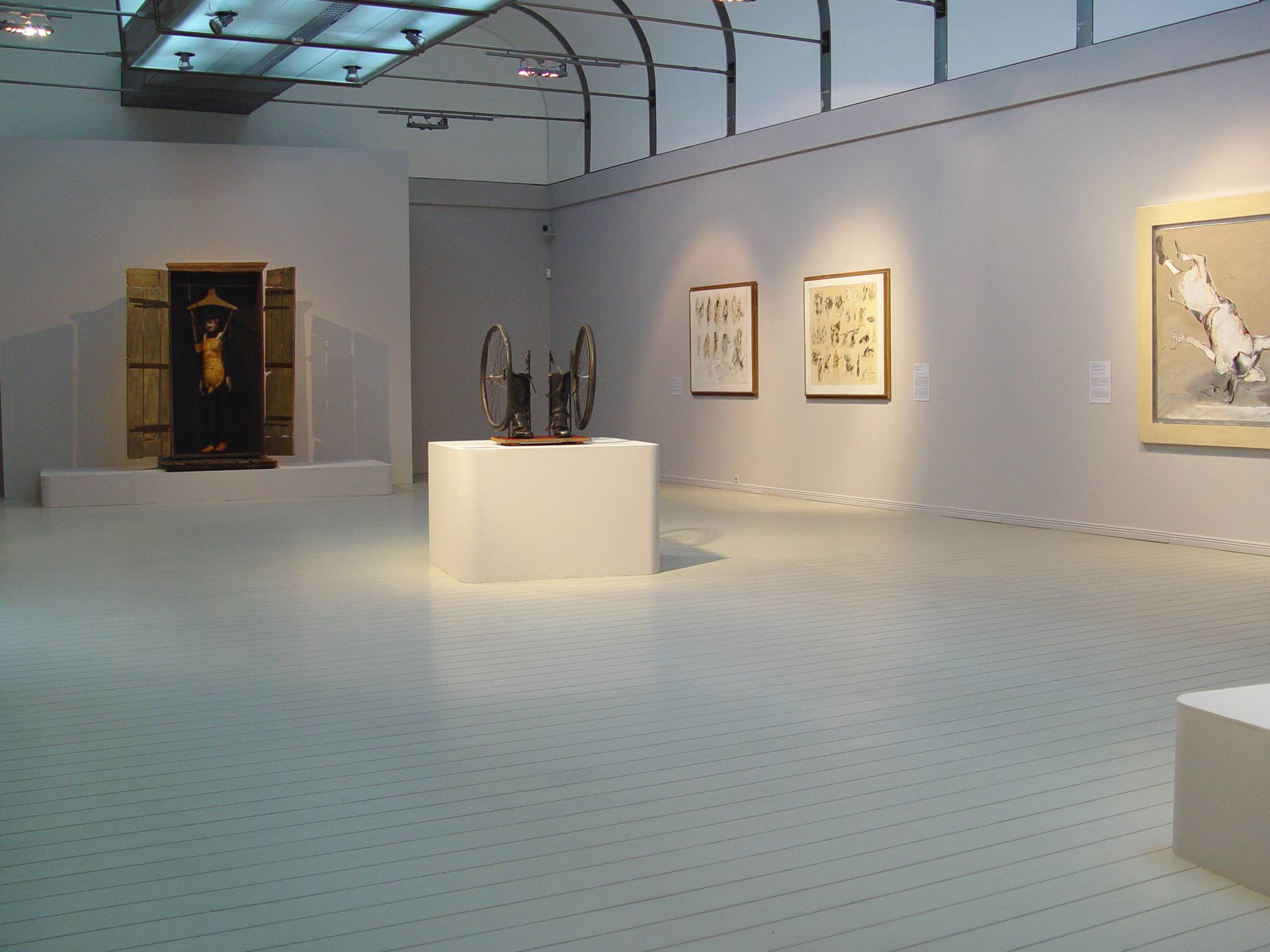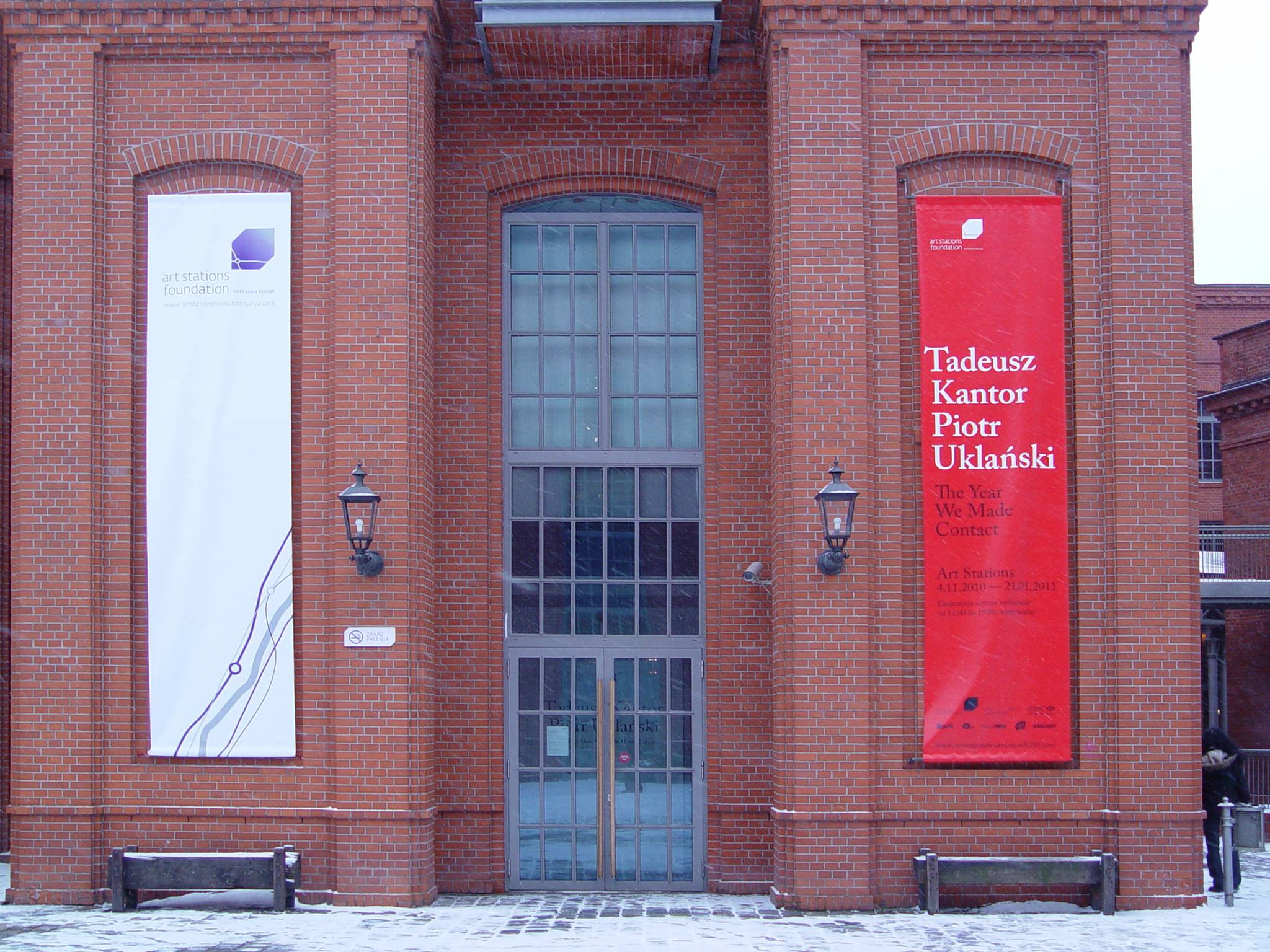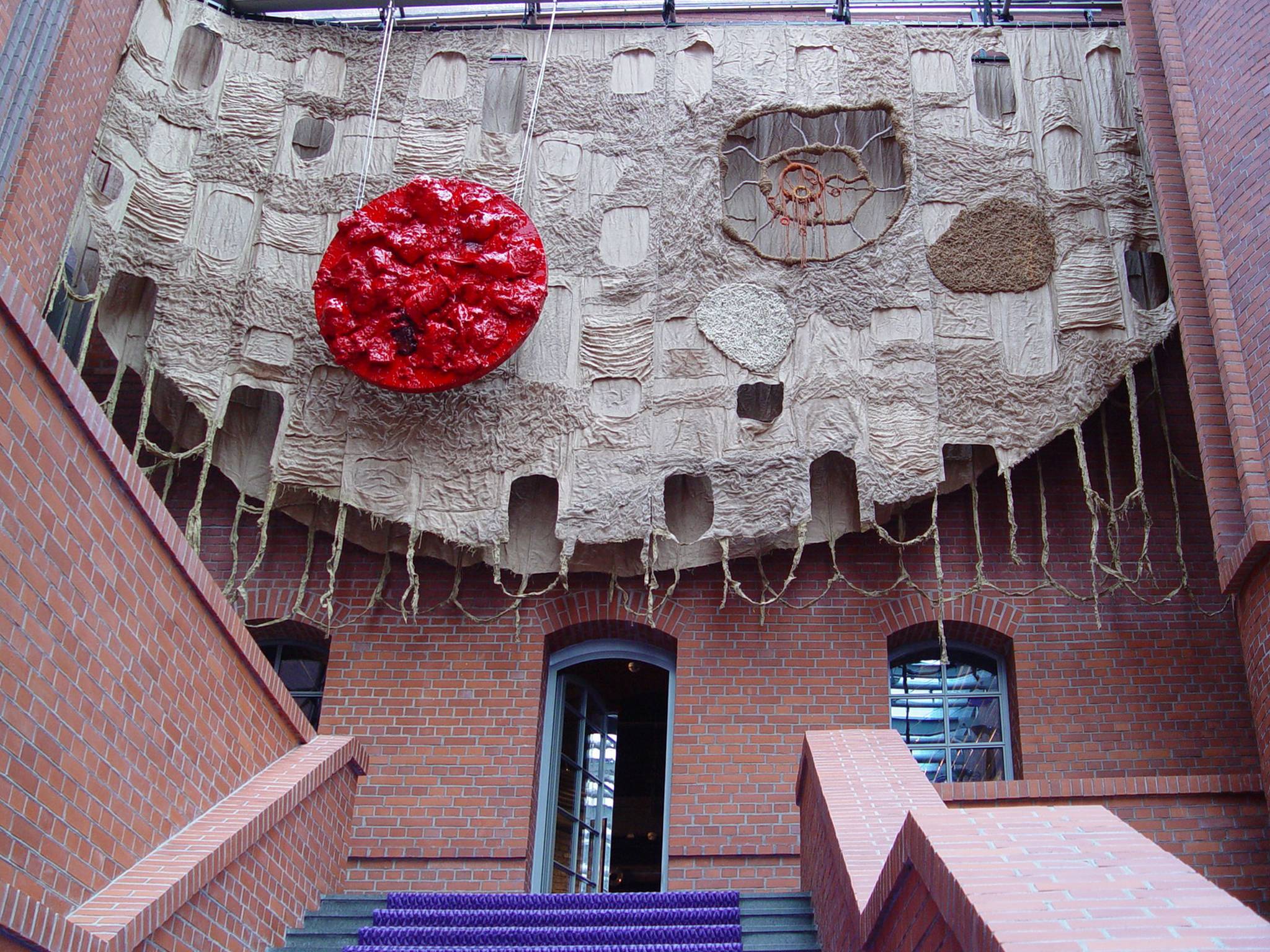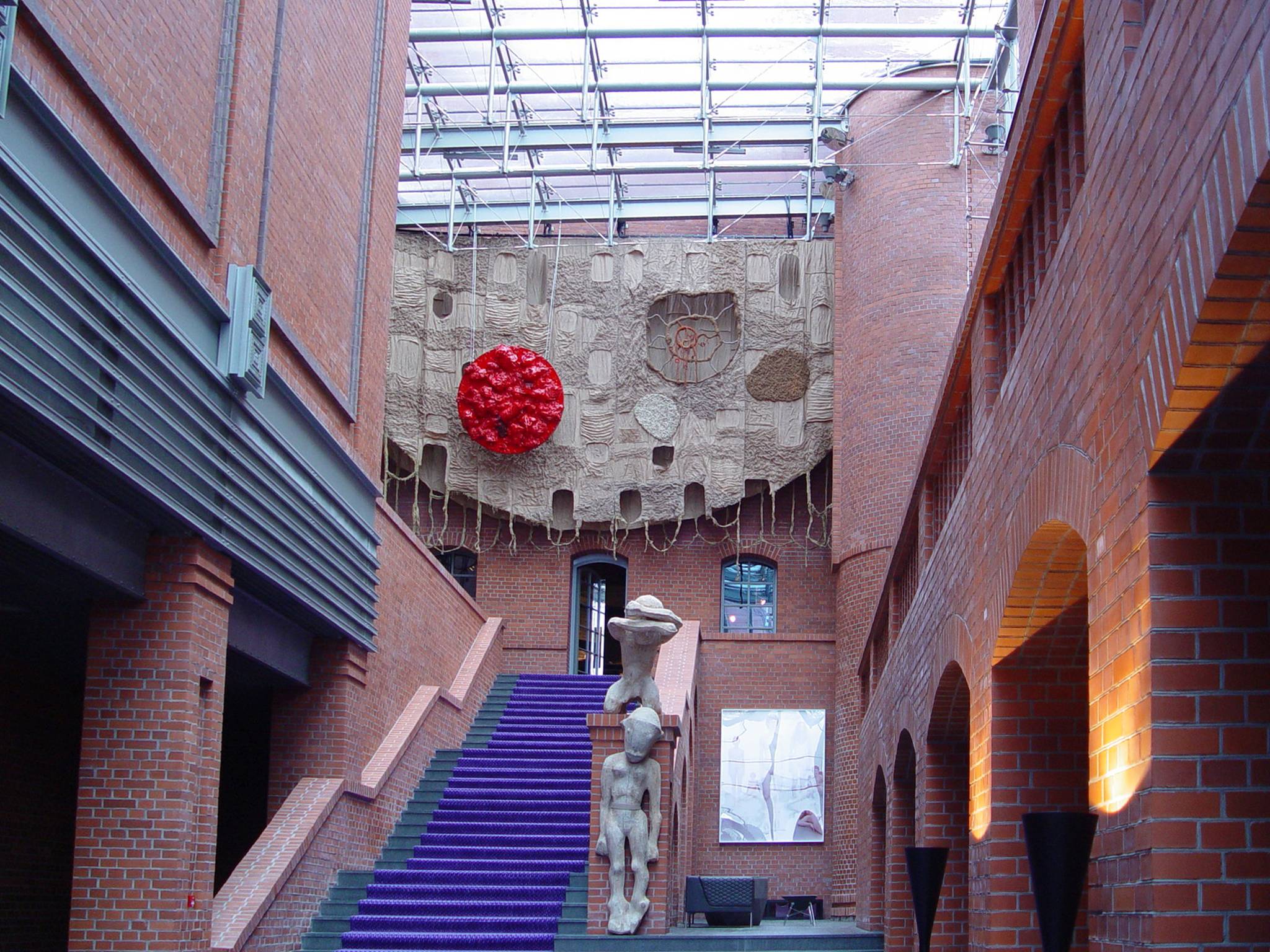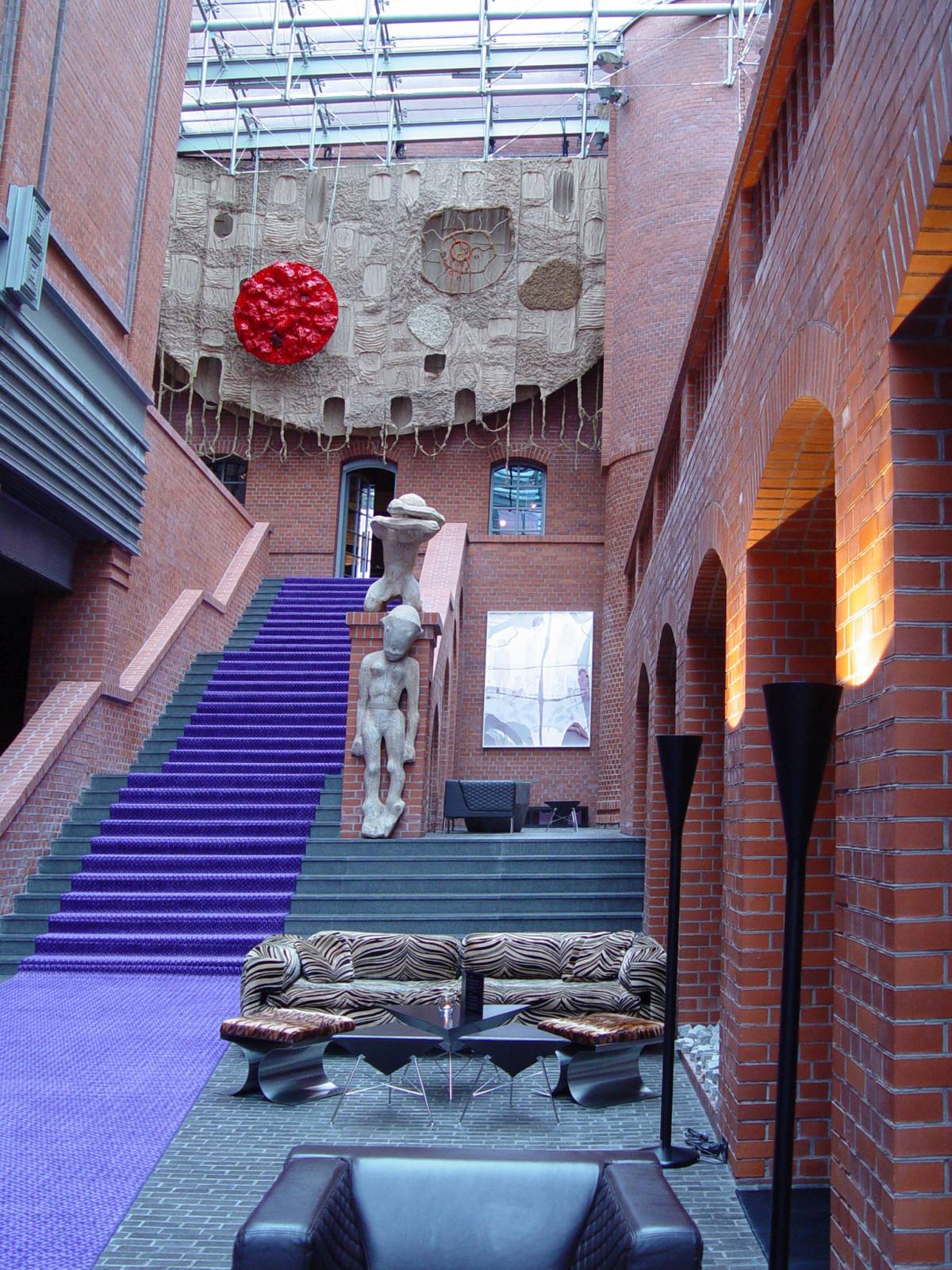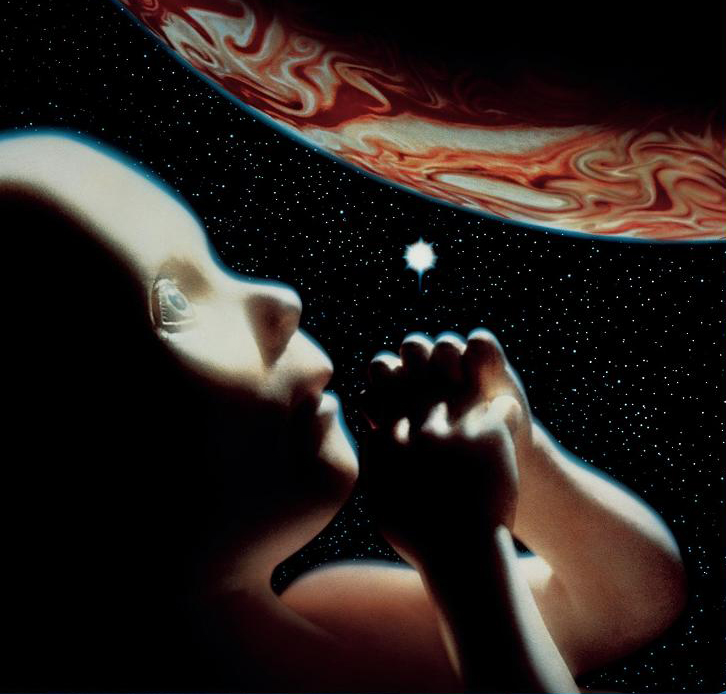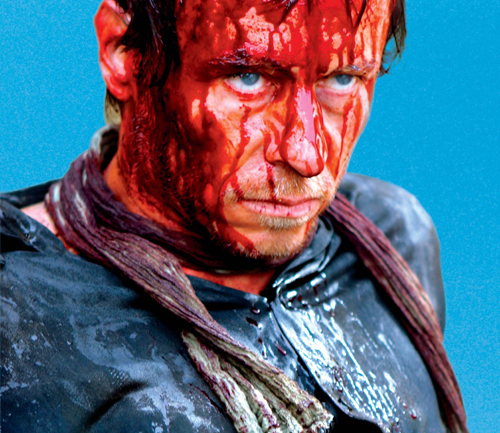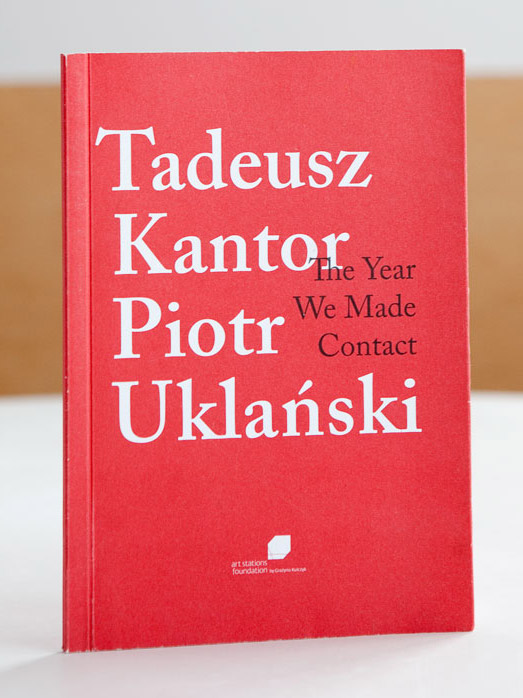The exhibition was organized as a parallel display of two artistic stances and, at the same time, of two artists representing different generations, backgrounds and interests.
The most recent, monumental work by Piotr Uklański served as inspiration for side by side presentation with paintings and theatre objects by Tadeusz Kantor.
The works were combined in two parallel presentations with a view to creating the conditions for an interaction of objects within the perspective of their individual contexts and a transformation of signification and iconography, as proposed by Uklański.
Uklański’s work “Untitled (The Year We Made Contact)”, 2010, is an installation whose principal element is a huge textile surface, a tapestry whose style, form of expression, and stage quality invoke the recognizable climate of Tadeusz Kantor’s and Józef Szajna’s theatre. Hence, its original composition, its spatial, quasi-theatrical arrangement and colour palette bear all the traces of the great tradition of Polish artistic textiles of the 1960s and 1970s. An inseparable part of the work is a hanging round and red object entitled ‘Red Dwarf’, inscribed into the field of the aforementioned painting. Both elements make up an inseparable whole that appropriates the space they are located in. In deciding to execute his work in such a recognizable form and style, Uklański created something that further continues his earlier artistic program. He seeks ever new strata of signification contained in stereotypes, cultural symbols and national myths.
The artist, who since 1991 has lived in New York, has worked with photography, film, video, and installation. Both his artistic expertise and fascinations invariably oscillate around popular culture. Drawing at will on its wealth and strongly inspired by it, Piotr Uklański does not shun visual clichés. However, in the creative process he never deconstructs them completely, although he is known for sweeping reconfigurations of significance through a shift of context (Dance Floor, 1996, where a disco dance floor with pulsating lights was transferred to a gallery, thanks to which the object seemed to acquire the features of a minimalist sculpture). He is likewise famous for his ability to bring out surprising qualities of an object despite its context (the infamous series of photographs entitled ‘The Nazis’, where the aesthetic quality of the work showing handsome men in uniforms obstructed the historical and sombre context of the portraits).
In the case of ‘The Year We Made Contact, 2010’, the artist seems to be superimposing a unique layer of significance onto a clearly defined and recognizable stylistic layer. The title of the installation invokes a science- fiction movie from the 1980s, while an element of spatial composition under the telling title ‘Red Dwarf’ is but a visual interpretation of a burning out star, as unmistakably suggested by its name.
The idea of introducing Tadeusz Kantor’s paintings and objects and their inclusion into a joint artistic space with a new installation by Piotr Uklański and its signifying context offered a unique opportunity for isolating those features and forms of expression that inspired the young artist’s work. The presence of the original canvases and dummies of the founder of Cricot 2 Theatre therefore played an important role in the interpretation process, highlighting tradition and stressing those aspects of Uklański’s art that do not succumb to it.
Scrutinizing the sources and origins of the style, symbolism and expressiveness of Kantor’s theatre, it is worthwhile to relate them to rarely available paintings of matter of the late 1950s and early 1960s, on display during the show. These paintings, along with works on canvas from the time Kantor was fascinated with the aesthetics of informel – which incidentally integrated the achievements of the Polish artist with the global avant-garde – were displayed next to objects from the first performance of Cricot 2 – In a Little Manor House.
The premiere of this historic and greatly acclaimed introduction of the informel theatre took place on 14 January 1961. During the performance the actors were treated on a par with objects and, stripped of their individual traits, composed an indistinguishable mass. As Kantor himself observed: ‘…people in a wardrobe have become similar to the clothes hanged there, deprived of their own will’. Therefore, the presentation at the Art Stations offered a unique chance for comparing the ‘stylistics of a lack of form’ of the substance of painting and its transgression to symbolic theatre space.
The public had a chance to see Kantor’s legendary ‘Wardrobe’ as a new venue of theatre space and at the same time an object the artist imparted with new meaning as a ‘metaphysical’ theatre prop. The characteristic stylistic features of the mannequins-objects supplemented the show and contributed to their coherent, though varied spatial composition.
A set of painted works exhibiting the inclusion into the framework of a painting of ‘low-ranking’ objects, such as a battered umbrella, was an important section of the show. Elements of so-called ‘ready-made reality’ were exhibited in the visualization of unimportant objects lacking artistic value, which are restored to the visual character of an art work. Within this group, special attention must be paid to an amazing and intriguing correlation of unsophisticated materials, for instance an unprimed canvas, in the case of two paintings from the suite ‘It All Hangs by a Thread’.
The design of the exhibit at the Art Stations, the stage set and the idea of juxtaposing works of two artists, Tadeusz Kantor and Piotr Uklański, facilitated reflection on the intermingling of styles and traditions, on the search for new forms in the context of the avant-garde symbolism of theatre and kindred visual arts. They also allowed a more profound analysis on the essence and message of works that make up individual elements of this coherent spatial composition.
The proposed juxtaposition provided an impetus for a fruitful debate, which might invoke the polemics taking place during the Biennale at the Whitney Museum, New York, during this year’s premiere of Piotr Uklański’s installation.
Piotr Uklański’s work from the Grażyna Kulczyk Collection, premiered during the Biennale at the Whitney Museum 2010, and it was presented for the first time in Poland. All of Tadeusz Kantor’s paintings come from the Grażyna Kulczyk Collection. Theatre objects were made available by the ‘Cricoteka’ Center for Documenting Tadeusz Kantor’s Art in Krakow.
